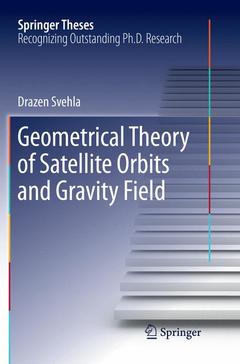Description
Geometrical Theory of Satellite Orbits and Gravity Field , Softcover reprint of the original 1st ed. 2018
Springer Theses Series
Author: Svehla Drazen
Language: English
Subject for Geometrical Theory of Satellite Orbits and Gravity Field :
Keywords
Space Geodesy; Kinematic Orbit; Reference Frames; Sea Level Change; Satellite Formation Flying; GNSS Phase-Clock Parameters; Time and Frequency Transfer; Integer Ambiguity Algebra; SLR Double-Differences; Lunar Laser Ranging; Satellite Thermal Re-radiation; Earth Orientation Quaternion; Gravity Field Of The Earth; Rotation Of Spherical Harmonics; Geometrical Representation Of Gravity; GNSS
Publication date: 01-2019
537 p. · 15.5x23.5 cm · Paperback
Publication date: 07-2018
Support: Print on demand
Description
/li>Contents
/li>Biography
/li>Comment
/li>
This book on space geodesy presents pioneering geometrical approaches in the modelling of satellite orbits and gravity field of the Earth, based on the gravity field missions CHAMP, GRACE and GOCE in the LEO orbit. Geometrical approach is also extended to precise positioning in space using multi-GNSS constellations and space geodesy techniques in the realization of the terrestrial and celestial reference frame of the Earth. This book addresses major new developments that were taking place in space geodesy in the last decade, namely the availability of GPS receivers onboard LEO satellites, the multitude of the new GNSS satellite navigation systems, the huge improvement in the accuracy of satellite clocks and the revolution in the determination of the Earth's gravity field with dedicated satellite missions.
Nominated as an outstanding PhD thesis by TU München, Munich, Germany
Reports on pioneering work on the estimation of purely geometrical (i.e. kinematic) orbits of LEO and GNSS satellites
Demonstrates orbit determination with cm accuracy for satellites in the LEO orbit up to the Moon distance
Describes novel approaches for satellite positioning based on multi-GNSS navigation systems and determination of reference frame of the Earth

